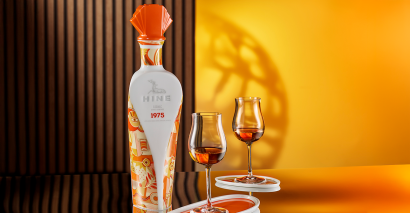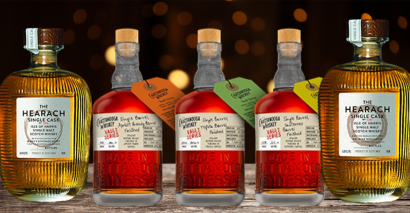
Ferrand's Latest Single-Vintage Cognac Was Aged on Two Continents
After an initial maturation in France, Renegade Barrel No. 4 was shipped to Barbados
November 24, 2025 –––––– Danny Brandon
Most cask-aged spirits are matured in one location, typically spending their entire lives in barrels tucked away in a particular rickhouse. However, some distillers do things differently, including sending their casks on long journeys to faraway lands with the hope that, somehow, the odyssey will directly impact the final product’s flavor. The practice is perhaps best seen in the world of ship-aged whiskies, with some labels like Jefferson’s Tropics Aged In Humidity, Kaiyō, and Never Say Die, aging their liquid on multiple continents broken up by long sea voyages, which are meant to coax out more barrel flavors. Now the renowned cognac house Maison Ferrand is exploring that method too, with its latest limited release spending time in both France and Barbados.
Between Two Worlds
Renegade Barrel No. 4 represents a selection of five 200-liter casks that were distilled in 2014 from grapes grown in Ferrand’s vineyards in Grande Champagne growing district in the heart of the Cognac denomination. After maturing for 4 years in Ferrand’s cellars in France, in 2018 the barrels were loaded onto a ship and sailed to Barbados, spending six weeks at sea.
Once the barrels arrived in Barbados, they were sent to Stade’s West Indies Rum Distillery —Ferrand’s sister distillery in the capital city of Bridgetown, which produces Stade’s and Planteray rum—where they were aged in the distillery’s humid beachfront cellar for 7 years. The climate is significantly different here compared to Cognac, with an average temperature of 90°F and humidity ranging from 95%–100%. These conditions foster an angels’ share of about 10% annually, whereas Cognac’s evaporation rate is closer to 3% annually and picks up more flavors from the barrel. In 2025, the barrels were sent back to France, spending another six weeks on a ship, where they were bottled at 46.2% ABV.
The English Connection
Inspiration for this expression comes from something called “early landed,” which is a split-location maturation process pioneered by cognac makers in the 19th century. Back then, England was the largest market for cognac, which presented a big logistical dilemma for French distillers. Transporting so many fragile bottles by ship could lead to costly accidents, which could be made infinitely worse if the liquid inside took years or even decades to age. The French found a safer and cheaper workaround by shipping barrels of cognac to England before they had reached peak maturation. These barrels, which were said to be “early landed” as they arrived at their destination market ahead of being fully matured, were often either sold to merchants or stored in satellite facilities owned by the cognac houses. Many of these barrels found a home in warehouses along the Thames River on the industrial side of London, where they were held until they finished aging before being bottled and sold locally, often in single-vintage batches.
Some cognac houses still use this process today, with Hine being the most notable example—occasionally releasing single-vintage expressions which were aged in both Cognac and London. In 2020, Delamain, one of France’s oldest cognac houses, bottled an early-landed cognac that was distilled in 1999 as part of its high-end Pléiade Collection. Though it doesn’t bill itself as early-landed, Kelt ages its cognac on ships for 3 months, with master blender Jeffrey Karlovitch—who also works on the Japan-based Kaiyō whisky brand—taking inspiration from 19th-century cognac makers. But the closest comparison to Maison Ferrand’s new cognac comes from Maison Camus, which released Camus Caribbean Expedition a few years ago. That expression was aged for 4 years in France, underwent a 45-day voyage to Barbados, and rested for a year in the cellars of the lauded Foursquare rum distillery before bottling.
How Does It Taste?
Ferrand Renegade Barrel No. 4 Cognac
ABV: 46.2%
SRP: $190
Availability: 550 bottles globally
The nose is rich and autumnal, offering baked apples, cherries, toffee, oak, ground cinnamon, and cigar box. The palate is similar, with dried apricots and baked apple pie joined by warming French oak-derived flavors of nutmeg, cinnamon, perfumed sandalwood, and pleasant tannins. Orange, caramel, and more oak all make appearances on the finish, with water bringing out pralines. Overall, it’s a well-structured sipper with plenty of aged character.




.png?resize=410x0)